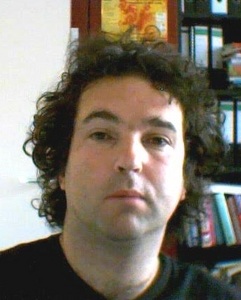


"Thinking with the experiments" is the sentence that better describes our changed attitude of numerical simulations with respect to the experiment. The need of a better control on material properties has opened a broad range of new problems. An extensive class of technologically relevant properties critically depends on local structural issues connected with domain sizes, domain boundary geometries, and defects. However, a precise understanding of structural transformation mechanisms, domain formation, interfaces and defects is still an open question. Materials capable of information or energy storage, or novel solid electrolytes able to provide the power for the nanoregime requires control on ionic diffusion/ionic transport phenomena. Ferroelectrics are fundamental materials, however the phenomenon of ferroelectricity is still a matter of debate. In my talk I will illustrate our way of performing simulations for this difficult classes of compounds and show our way of thinking on/with experments.
Key references:
[1] S.E Boulfelfel, D. Zahn, Yu. Grin, S. Leoni, PRL 99, 125505 (2007).
[2] S. Leoni, Chem. Eur. J. 13, 10022 (2007).
[3] S. Boulfelfel, S. Leoni, PRB, 78, 125204 (2008).
[4] S. Leoni. R. Ramlau, K. Meier, M. Schmidt, U. Schwarz, PNAS (2008) doi: 10.1073/pnas.0805235105



"Thinking with the experiments" is the sentence that better describes our changed attitude of numerical simulations with respect to the experiment. The need of a better control on material properties has opened a broad range of new problems. An extensive class of technologically relevant properties critically depends on local structural issues connected with domain sizes, domain boundary geometries, and defects. However, a precise understanding of structural transformation mechanisms, domain formation, interfaces and defects is still an open question. Materials capable of information or energy storage, or novel solid electrolytes able to provide the power for the nanoregime requires control on ionic diffusion/ionic transport phenomena. Ferroelectrics are fundamental materials, however the phenomenon of ferroelectricity is still a matter of debate. In my talk I will illustrate our way of performing simulations for this difficult classes of compounds and show our way of thinking on/with experments.
Key references:
[1] S.E Boulfelfel, D. Zahn, Yu. Grin, S. Leoni, PRL 99, 125505 (2007).
[2] S. Leoni, Chem. Eur. J. 13, 10022 (2007).
[3] S. Boulfelfel, S. Leoni, PRB, 78, 125204 (2008).
[4] S. Leoni. R. Ramlau, K. Meier, M. Schmidt, U. Schwarz, PNAS (2008) doi: 10.1073/pnas.0805235105